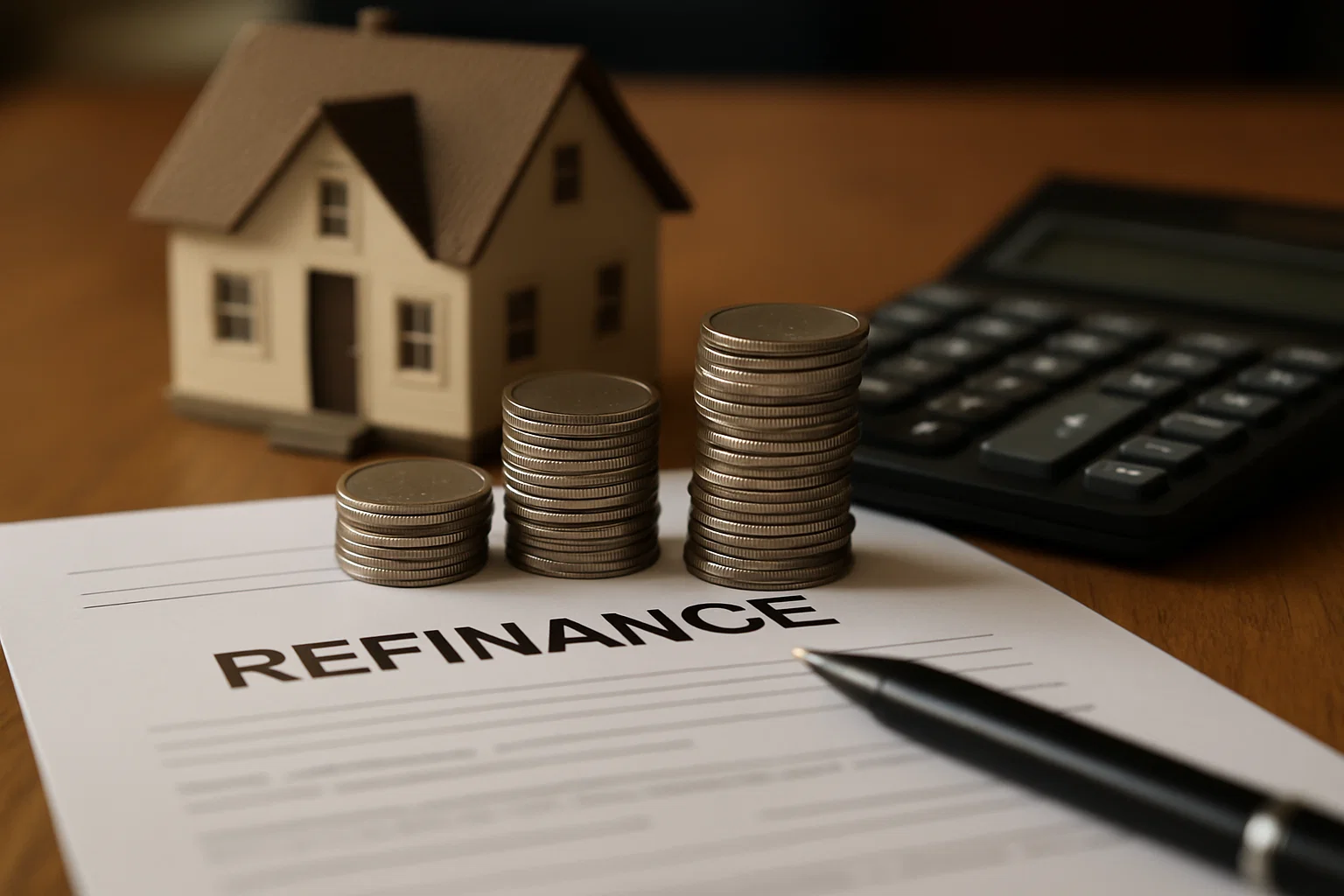
Refinancing your home loan offers one of the most direct pathways to improving your financial health, yet countless borrowers continue servicing original loan agreements without exploring whether better alternatives exist in today's competitive lending market. The refinancing process replaces your current loan with a new one featuring improved terms—whether through lower interest rates that reduce monthly payments, modified repayment schedules that better match your income patterns, or access to accumulated property equity for strategic financial purposes. Understanding the mechanics of refinancing, recognizing when it makes financial sense, and executing the process strategically can save you lakhs of rupees while simultaneously freeing resources for investments, emergency funds, or other wealth-building activities that strengthen your long-term financial position.
The refinancing landscape has evolved dramatically in recent years, with increased competition among lenders, streamlined digital application processes, and greater transparency in loan terms creating favorable conditions for borrowers willing to explore their options. However, capturing maximum value requires moving beyond surface-level comparisons of advertised interest rates to conduct comprehensive analysis of total costs, breakeven timelines, and alignment with your specific financial objectives. This guide provides a strategic framework for evaluating refinancing opportunities and implementing approaches that deliver meaningful, lasting financial benefits rather than marginal improvements that barely justify the effort and expense involved.
Key Refinancing Triggers and Decision Factors

Rate reduction opportunities emerge when the gap between your current loan rate and available market rates becomes substantial enough to justify refinancing costs. Financial experts typically suggest refinancing when rates fall at least 0.75-1% below your existing rate, though the precise threshold depends on your loan amount, remaining tenure, and closing costs. A borrower with ₹42 lakh outstanding and 16 years remaining who reduces their rate from 9.5% to 8.3% could save several lakhs in total interest while lowering monthly EMI by thousands of rupees—savings that compound month after month throughout the remaining loan tenure. Beyond absolute rate reduction, consider whether switching rate structures aligns with your financial strategy and risk tolerance. Fixed-rate loans provide payment certainty and protection against future rate increases, proving valuable when you expect rates to rise or simply prefer budgeting predictability. Floating-rate loans offer potential savings when rates decline or remain stable but expose you to payment increases during rate-hiking cycles, making them suitable for borrowers with stable incomes who can absorb potential payment fluctuations.
Life stage transitions often create natural refinancing moments when your financial circumstances or priorities shift substantially from when you originally secured your loan. Career advancement bringing significant income increases enables refinancing to shorter loan tenures—accepting higher monthly payments in exchange for dramatically reduced total interest and faster debt elimination. This strategy proves particularly valuable for mid-career professionals looking to eliminate housing debt before retirement, providing financial security during later life stages when income may decline. Conversely, temporary financial pressures from business challenges, medical expenses, or family obligations might necessitate tenure extensions that reduce required monthly payments, preventing default and preserving credit standing despite increasing lifetime interest costs. Marriage creating dual-income households strengthens refinancing applications and improves affordability, while divorce or career transitions might require restructuring to match changed financial realities.
Equity accumulation and property appreciation strengthen your refinancing position while potentially unlocking new financial opportunities. The combination of principal paydown through regular loan payments and property value appreciation through market dynamics creates growing equity that lenders view favorably. Borrowers with 40-50% equity typically access the most competitive rates since substantial ownership percentages reduce lender risk in default scenarios:
- Major home renovations completed since purchase increase property values, improving loan-to-value ratios and potentially qualifying you for better refinancing terms
- Neighborhood infrastructure development, improved amenities, or general market appreciation enhance property values independently of your actions
- Strategic cash-out refinancing allows accessing accumulated equity for purposes like additional property investments, business ventures, or education expenses
- Higher equity percentages provide negotiating leverage with lenders competing for borrowers with strong financial profiles and substantial property ownership
Credit score improvements since your original loan approval often qualify you for dramatically better terms regardless of whether market rates have changed significantly. Lenders tier their pricing based on credit scores, with each tier representing meaningful rate differences that compound into substantial savings over loan lifetimes. Consistent on-time payments across all financial obligations, reduced debt-to-income ratios through debt paydown, and lengthened credit history through responsible account management typically improve scores substantially over several years. Moving from the 690-720 range into the 760-plus category crosses critical thresholds that unlock premium pricing tiers offering rates potentially 0.5-1% lower than standard categories—differences that translate to lakhs saved over remaining loan tenures.
Executing Your Refinancing Successfully

Comprehensive cost analysis prevents expensive mistakes where refinancing costs exceed captured benefits. Closing costs typically range from 2-5% of loan amount, encompassing processing fees, legal charges, property valuation expenses, and stamp duty where applicable. Calculate your breakeven point by dividing total refinancing costs by monthly payment reduction—if refinancing costs ₹85,000 and reduces EMI by ₹7,000, breakeven occurs at approximately 12 months. Remaining in your property significantly beyond this threshold makes refinancing profitable, while relocating before breakeven means paying substantial costs without sufficient time to capture offsetting benefits. Beyond breakeven analysis, examine total interest paid over remaining loan tenure under current terms versus refinanced terms—sometimes lower rates combined with extended timelines actually increase lifetime costs despite reducing monthly payments, making this comprehensive view essential for sound decisions.
Lender comparison and negotiation leverage determines whether you secure excellent terms or settle for mediocre deals. Request detailed proposals from 5-7 lenders including traditional banks, housing finance companies, and digital platforms. Create standardized comparison frameworks evaluating complete cost structures—processing fees, legal charges, prepayment penalties, and restrictive covenants—not just advertised interest rates. Calculate annual percentage rates incorporating all costs for accurate comparison. During negotiations, present competing offers requesting rate matching or fee waivers. Lenders maintain considerable flexibility beyond published terms, particularly for borrowers with strong credit profiles and substantial equity:
- Question excessive fees demanding detailed written justifications and requesting reductions
- Negotiate prepayment penalty elimination maintaining future flexibility for additional refinancing or accelerated payoff
- Consider timing applications during period-end or fiscal year-end when lenders may show greater flexibility to meet volume targets
- Work with mortgage brokers maintaining wholesale lender relationships potentially accessing rates unavailable to individual retail borrowers
Post-refinancing wealth strategies transform temporary savings into lasting financial security through disciplined resource deployment. If refinancing reduces monthly EMI by ₹6,000-9,000, implement systematic strategies that compound benefits over time. Maintain previous higher payment amounts, applying differences as principal prepayment that dramatically shortens loan tenure and saves substantial additional interest beyond initial refinancing savings. Establish systematic investment plans channeling savings into diversified equity mutual funds generating potential returns exceeding loan interest rates. Build emergency reserves covering 6-12 months of expenses before aggressive investing ensures financial shocks don't jeopardize loan payments. Review refinanced loans annually, staying alert for additional opportunities if rates decline further or your financial profile strengthens through income growth, credit improvement, or equity accumulation.
Refinancing succeeds when approached as comprehensive financial optimization requiring strategic analysis, thorough preparation, aggressive comparison shopping, and disciplined implementation. Borrowers who invest effort in understanding their complete financial pictures, evaluating all available options systematically, and deploying savings strategically consistently achieve superior outcomes that compound into substantial long-term financial security and wealth accumulation.

Alex Chen

Alex Chen













Get in touch with a loan officer
Our dedicated loan officers are here to guide you through every step of the home buying process, ensuring you find the perfect mortgage solution tailored to your needs.
Options
Exercising Options
Selling
Quarterly estimates
Loans
New home

Stay always updated on insightful articles and guides.
Every Monday, you'll get an article or a guide that will help you be more present, focused and productive in your work and personal life.









.png)
.png)
.png)
.png)
.png)
.png)
.png)
.png)
.png)
.png)
.png)
.png)
.png)
.png)
.png)
.png)
.png)
.png)